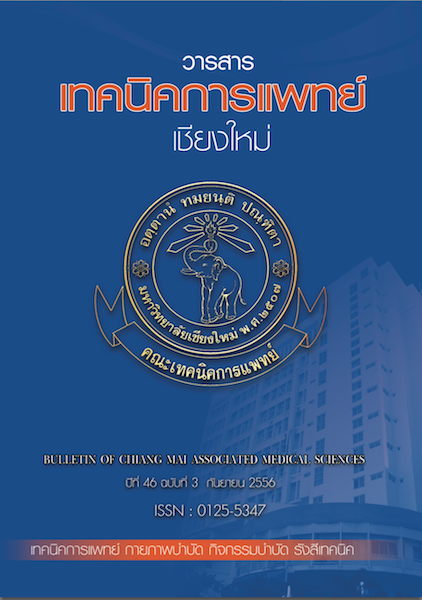Community- and livestock-associated methicillin-resistant Staphylococcus aureus: a silent threat to Thai public health
Main Article Content
Abstract
Methicillin-resistant Staphylococcus aureus or MRSA was fi rst recognized 50 years ago as the “Superbug” in the United Kingdom as its antibiotic treatment often was limited to only vancomycin. Since then the spread of MRSA among patients in hospitals has been reported worldwide. The organism is known as hospital-associated MRSA (HA-MRSA) and currently considered one of the leading causes of morbidity and mortality of patient. During the past 15 years, signifi cant increase of MRSA infections outside the healthcare settings has posted global public health concern. These infections are caused by MRSA strains that are genetically distinct from HA-MRSA strains so called community-associated MRSA (CA-MRSA) and livestock-associated MRSA (LA-MRSA). Comparatively, CA-MRSA strains are more susceptible to antimicrobial agents, rapidly spreading and often capable of causing more severe diseases such as necrotizing pneumonia and sepsis. Recent survey and molecular characterization of MRSA from Thai veterinarians revealed a LA-MRSA strain that carry a novel SCCmec type IX, which is to date only found in Thailand. It was classifi ed as sequence type ST398 and spa type t034. In addition, the second most prevalent clonal complex (CC) among LA-MRSA strains, CC9, was isolated from pigs and pork samples in Thailand. All isolates belong to spa type t337 and also harbor SCCmec type IX. These reports highlight the possible transmission of a unique MRSA clone from livestock to human in the community, and eventually in the hospital, otherwise in the other way round. The purpose of this review was to describe the signifi cance, molecular evolution and typing methods of MRSA and review molecular pathogenesis and epidemiology of CA-MRSA and the recent emergence of LA-MRSA in Thailand, so as to incite vital surveillance and intervention, which are necessary for control and prevention of spread of these neglected pathogens. Bull Chiang Mai Assoc Med Sci 2013; 46(3): 187-206
Article Details
Personal views expressed by the contributors in their articles are not necessarily those of the Journal of Associated Medical Sciences, Faculty of Associated Medical Sciences, Chiang Mai University.

